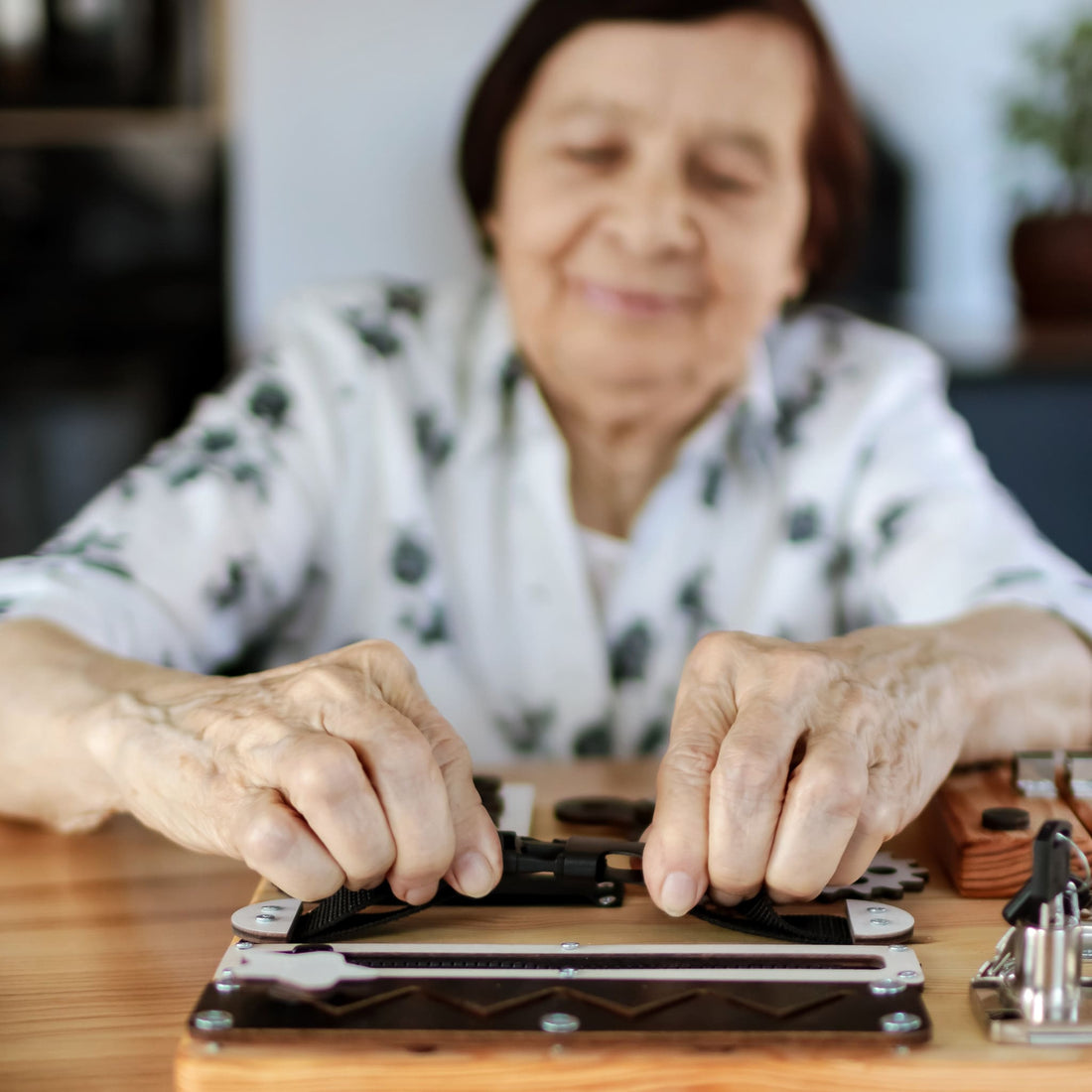
The Power of Sensory Activities: How Busyboards Aid in Dementia Rehabilitation and Child Development
Share
The Power of Sensory Activities: How Busyboards Aid in Dementia Rehabilitation and Child Development

In the journey of **rehabilitation** and **cognitive development**, engaging sensory activities have proven to be incredibly effective. Whether it’s for **seniors battling dementia**, individuals with **Parkinson’s disease**, or **children with autism and developmental disabilities**, **busyboards** offer a unique and interactive way to stimulate the mind and enhance fine motor skills.
Why Are Sensory Activities Important?
Our brains thrive on **stimulation**. **Dementia**, **Alzheimer’s disease**, and **Parkinson’s disease** often cause cognitive decline, impacting memory, coordination, and emotional well-being. Similarly, children with **autism spectrum disorder (ASD)** or other developmental delays benefit from activities that improve **focus, hand-eye coordination, and sensory processing**.
The Role of Busyboards in Rehabilitation
Busyboards serve as an **effective therapy tool** because they engage multiple senses simultaneously. By interacting with different **textures, locks, buttons, gears, and switches**, users **stimulate brain function and motor coordination**. Key benefits include:
- Memory Stimulation: Helps recall **actions and routines**, supporting dementia patients.
- Fine Motor Skills Development: Enhances **dexterity and coordination** in individuals with Parkinson’s.
- Sensory Engagement: Encourages **tactile and visual processing**, crucial for children with autism.
- Emotional Comfort: Provides a **sense of accomplishment and relaxation**.
- Cognitive Activation: Strengthens **problem-solving skills** and **logical thinking**.
How Busyboards Support Child Development
For children with **autism**, **ADHD**, and **sensory processing disorders**, busyboards are a **safe and interactive way** to explore new stimuli. Engaging with different textures, colors, and objects helps them develop **confidence, patience, and sensory tolerance**.
Real-Life Impact: Stories of Transformation
Many families and caregivers have witnessed the transformative impact of **busyboards**. From a **grandmother with Alzheimer's** regaining a sense of familiarity to a **child with autism improving focus and patience**, these simple tools have changed lives.
